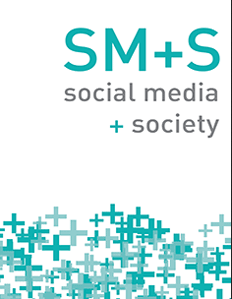在数字化空间管理大流行病:评估斯堪的纳维亚公共卫生机构的社交媒体方法
IF 5.5
1区 文学
Q1 COMMUNICATION
引用次数: 0
摘要
为应对 COVID-19 大流行,瑞典、挪威和丹麦的卫生和民事应急机构--在此称为公共卫生当局(PHA)--转而利用社交媒体来传播大流行病建议和信息。本研究探讨了斯堪的纳维亚公共卫生机构采用的社交媒体危机管理策略。具体来说,我们采用多平台研究方法,评估了三个社交媒体平台(Facebook、Instagram 和 Twitter,目前称为 X)的传播目标(指导、支持、管理声誉和吸引互动)。我们根据以往的学术研究提出了一系列假设,详细说明了不同目标在不同平台和国家的普遍性。结果表明,声誉管理的使用率很高,尤其是在推特上;而在瑞典和丹麦,信息指导则成为使用率很高的传播目标。总体而言,尽管瑞典实施了更为宽松的危机管理策略,但各国的传播趋势仍然是一致的。与丹麦和挪威相比,瑞典的主要区别在于其公共卫生机构对大流行病的重视程度相对较低。各国在危机公关目标上的差异表明,挪威公共卫生部门在声誉管理方面表现突出,而瑞典则在Instagram上采用了更多的支持性信息。本文章由计算机程序翻译,如有差异,请以英文原文为准。
Managing the Pandemic in Digitized Spaces: Assessing the Social Media Approaches of Scandinavian Public Health Authorities
In response to the COVID-19 pandemic, health- and civil-contingency agencies—referred to here as public health authorities (PHAs)—in Sweden, Norway, and Denmark turned to social media to disseminate pandemic recommendations and information. This study explores the social media crisis management strategies employed by Scandinavian PHAs. Specifically, we apply a multiplatform research approach to assess communication objectives (Instruct, Support, Manage Reputation, and Solicit Interaction) across three social media platforms—Facebook, Instagram, and Twitter (currently known as X). Introducing a series of hypotheses based on previous scholarship, we detail the prevalence of different objectives across platforms and countries. The results indicate prominent use of reputational management, particularly on Twitter, while instructive information emerged as a highly used communication objective in Sweden and Denmark. Overall, the communicative trends remained parallel across nations, despite Sweden implementing a more relaxed crisis management strategy. The main distinction in Sweden’s approach manifested in a relatively lower emphasis on the pandemic by its PHAs compared to Denmark and Norway. National differences in crisis communication objectives indicate that Norwegian PHAs stand out in terms of using reputational management, while Sweden stands out in employing more supportive information on Instagram.
求助全文
通过发布文献求助,成功后即可免费获取论文全文。
去求助
来源期刊

Social Media + Society
COMMUNICATION-
CiteScore
9.20
自引率
3.80%
发文量
111
审稿时长
12 weeks
期刊介绍:
Social Media + Society is an open access, peer-reviewed scholarly journal that focuses on the socio-cultural, political, psychological, historical, economic, legal and policy dimensions of social media in societies past, contemporary and future. We publish interdisciplinary work that draws from the social sciences, humanities and computational social sciences, reaches out to the arts and natural sciences, and we endorse mixed methods and methodologies. The journal is open to a diversity of theoretic paradigms and methodologies. The editorial vision of Social Media + Society draws inspiration from research on social media to outline a field of study poised to reflexively grow as social technologies evolve. We foster the open access of sharing of research on the social properties of media, as they manifest themselves through the uses people make of networked platforms past and present, digital and non. The journal presents a collaborative, open, and shared space, dedicated exclusively to the study of social media and their implications for societies. It facilitates state-of-the-art research on cutting-edge trends and allows scholars to focus and track trends specific to this field of study.
 求助内容:
求助内容: 应助结果提醒方式:
应助结果提醒方式:


